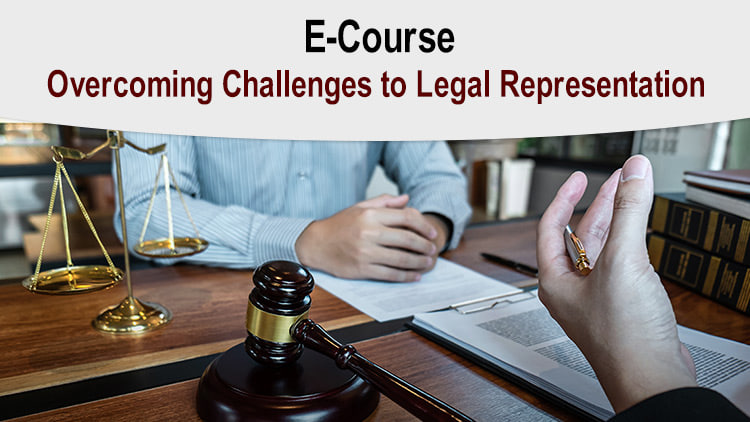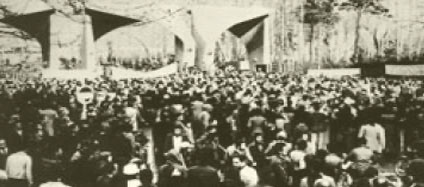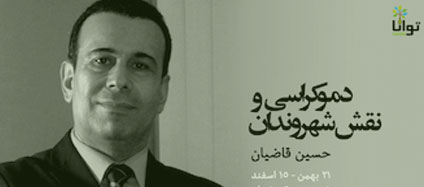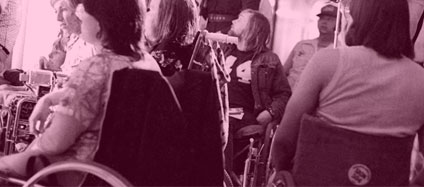In Lesson 1, we learned about the importance of articulating an overarching vision that guides all your activism. You will now translate your vision into a more specific and attainable goal, as well as objectives, or means to achieve your goal. You will also carve out specific actions to take, which will ultimately take you closer to fulfilling your vision.
By the end of this lesson, you will have brainstormed and recorded your activism goal and begun to think about objective and specific actions to achieve that goal.
If you have built castles in the air, your work need not be lost; that is where they should be. Now put the foundations under them.
–Henry David Thoreau
It is important to maintain your vision as an overarching, sustaining ideal that you feel you are moving towards at all times in your activism.
For example, your vision might be to end illegal drug use in your city.
At the same time, it is important to set a specific, achievable goal for the near term.
Goals, in relation to your grand, guiding vision, are:
• Specific
• Attainable
• Measurable
• Time bound
• Targeted to particular audiences
• Lead toward action and tangible results
Remember that you can set multiple goals for your vision. There are many different ways to work towards your ultimate vision.
Your goal could be to prevent illegal drug use among your city’s high school students and/or to rehabilitate drug addicts in one neighborhood.
In order to achieve your goal, you need to set objectives: short-term goals that will help you achieve your overarching goal. Objectives are the outcomes necessary to achieve your goals.
If your goal is preventing illegal drug use among your city’s high school students, you could set objectives of:
• Launching a campaign at a local high school to raise awareness of the dangers of drugs
• Organizing a group of former drug addicts to give talks at the high school.
Or if your goal is to rehabilitate drug addicts in one neighborhood, your objectives could be:
• Founding a rehabilitation center
• Getting parliament to increase funding for existing rehabilitation efforts
After determining your objectives, you will take actions – for example, collecting signatures on a petition, holding a boycott or strike, or organizing protests – to achieve them.
If your objective is launching a campaign at a local high school to raise awareness of the dangers of drugs, theactions you could take to achieve this might include:
• Printing posters, flyers, and stickers with your campaign slogan and information on drug abuse
• Distributing these materials in the high school’s hallways, library and cafeteria
• Writing op-eds for the student newspaper and giving media interviews about drugs to TV, radio, and newspaper outlets
• Starting a website, Facebook page, and blog about drug-related issues
• Hold monthly educational public forums/lectures on drugs at the high school
Depending on your goals and objectives, there are many nonviolent actions that can help you succeed. Nonviolent actions fall into three categories:
• Protest and persuasion – Symbolic actions that express support or opposition.
o Public speeches
o Petitions
o Flags or posters
o Newspapers or pamphlets
• Noncooperation – Deliberate disobedience, often in reaction to an unjust law.
o Boycotts
o Rent withholding
o Strikes
o Resigning posts
• Intervention – Taking initiative to interrupt an ongoing activity you are fighting against.
o Hunger strike
o Sit-ins
o Nonviolent invasion
o Overloading of facilities
Click here to read Gene Sharp’s full list of 198 methods of nonviolent action.
Sample “tree” of a vision with multiple different goals
Read Tavaana’s exclusive case studies for more examples.
From Tavaana’s Otpor case study:
The members of Otpor were diverse, but all were able to agree on one common goal: to bring down Milosevic. While the movement’s ultimate vision was for a democratic Serbia with free and fair elections, as Ivan Marovic, one of the movement’s founders explained, “The goal was change of the regime first and then reform of the system later.”
But regime change was a lofty goal for a group of students who were “small and powerless in the beginning, compared to the regime.” Marovic explained, “We couldn’t use force on someone who…had three times more force and weapons than we did. We knew what had happened in…Tiananmen, where the army plowed over students with tanks.” Furthermore, Otpor wanted to take a different path than Milosevic’s violent one; through peaceful actions, the movement could “prove that Serbians are civilized.” So Otpor decided to challenge the regime through nonviolent actions and through elections, by uniting the Serbian opposition behind a single candidate to face Milosevic.
Armed with knowledge of the regime’s playbook, Otpor began preparing for the 2000 elections two years in advance. First, they needed to unite Serbia’s fragmented opposition behind a single candidate. Then, when that candidate won, they needed to mobilize supporters to defend his victory. Otpor decided that the best means to accomplish this would be a general strike, hoping that it would bring the country to a standstill.
Activity:
Fill out the following pyramid with the vision, goal, objectives, and actions of the Otpor movement, based on the text you just read.
Choices:
A democratic Serbia with free and fair elections [Vision]
Bring down the Milosevic regime [Goal]
Unite the opposition behind one candidate in the next elections [Objective]
Recruit supporters [Action]
Mobilize supporters through a strike [Action]
From Tavaana’s Wael Abbas case study:
Throughout his blogging career, Abbas has kept his goals in mind: “My mission is to reach people [and] mobilize them. It is to acquaint people with their rights. I want the uneducated Egyptian to know that it is not acceptable for anyone to slap him on [the back of his neck, as police have done with suspects]. If I can do that, then that’s good enough.”
On his blog, Abbas has raised awareness about government repression of political protests, sexual harassment in Cairo, election fraud, the assault and torture of political dissidents, and gruesome incidents of police brutality. Through it all, he says, “All I wanted was for my country to change, to become more democratic, and to recognize the basic rights of its citizens. So I focused my work on making people aware of what was going on and helping them understand their rights.”
Abbas envisions a democratic Egypt where civil liberties and rights are respected. “I am a regular Egyptian who wants my country to be better,” he says. “I want to see transfer of power, democracy, freedom, and freedom of opinion and expression.” An opponent of the Muslim Brotherhood, he acknowledges the possibility of their coming to power in a truly democratic Egypt, and says, “That’s why I believe in working on two levels — advocating democracy while enlightening the people so that they make the right choice when the time comes for real democratic elections. That’s why I called my blog Egyptian Awareness.”
Activity:
Fill out the following pyramid with Wael Abbas’s vision, goal, objectives, and actions, based on the text you just read.
Choices:
A democratic Egypt where civil rights are respected [Vision]
Raise Egyptians’ awareness of their rights [Goal]
Reach Egyptians through blogging [Objective]
Write blog posts about topics like police brutality [Actions]
Martin Luther King, Jr.
It was there that Rosa Parks, an African American woman, refused to vacate her seat in the middle of the bus so that a white man could sit in her place. She was arrested for her civil disobedience. Parks’ arrest, a coordinated tactic meant to spark a grassroots movement, succeeded in catalyzing the Montgomery bus boycott. After a year-long boycott, a United States District Court ruling in Browder v. Gayle banned racial segregation on all Montgomery public buses. In many ways, the Montgomery bus boycott kicked off a national struggle to eliminate racial discrimination, with King leading the way.
The success of the Montgomery campaign led Dr. King and fellow African American civil rights activists to form the Southern Christian Leadership Conference (SCLC) in 1957, whose mission was to harness the moral authority and organizing power of black churches to conduct non-violent protests for civil rights reform. With King as its leader, the SCLC’s initial focus was to lead localized campaigns of desegregation in Southern cities like Albany, Georgia; Birmingham, Alabama; and St. Augustine, Florida that mirrored the Montgomery campaign. In each of the cities, King and thousands of SCLC activists worked towards specific goals: ending segregation in just one area, such as diners, buses, schools, or shops. Despite the asymmetrically more powerful police and local government officials who had institutionalized policies of segregation for years, King’s nonviolent tactics of civic activism forced the issue of segregation onto the national agenda.
By drawing nation-wide attention to segregation, King became a core organizer, one of the “Big Six”, of the famous 1963 March on Washington, which demanded political and economic justice for all Americans. It was a public opportunity for King and his cohorts to place their concerns and grievances before the nation’s capital, as expressed by King in his renowned “I Have a Dream” speech. The March on Washington not only led to the passage of significant civil rights legislation, but it also allowed King to advocate for other human rights causes such as poverty and workers’ rights.
Fill out the following pyramid with the American civil rights movement’s vision, goal, objectives, and actions, based on the text you just read.
Choices:
Racial equality in the United States [Vision]
Raise public awareness about racism [Goal]
Fight racism through local grassroots campaigns [Objective]
Launch boycotts and other activities to end local segregation [Actions]
Now read the vision statement below, then choose the two goals that match the vision.
“To ensure gender equality in my country’s laws.”
• Get parliament to change laws relating to divorce.
• Raise public awareness and build pressure to repeal discriminatory laws against women.
• Achieve equality for women in my country. [This answer is wrong because it is too broad to be a goal – it is more of a vision statement.]
• Organize a petition drive in support of changes to the law. [This answer is wrong because it is an action, not a goal. Remember that a goal does not describe what you will do, but what you will ultimately achieve.]
When moving from your vision to defining your more specific and more attainable goal, ask yourself if your goal will:
1. Result in a real improvement in people’s lives?
2. Give people a sense of their own power?
3. Build strong lasting organizations and alter the relations of power?
4. Raise awareness about power relations and democratic rights?
5. Be winnable?
6. Be widely felt?
7. Be deeply felt?
8. Be easy to communicate and understand?
9. Provide opportunities for people to learn about and be involved in policies?
10. Have clear advocacy targets?
11. Have a clear time frame?
12. Be non-divisive among your potential constituency?
13. Build accountable leadership?
14. Be consistent with your values and vision?
15. Provide potential for raising funds?
16. Link local issues to global issues and macro policy context?
Adapted from A New Weave of Power, People, and Politics: The Action Guide for Advocacy and Citizen Participation by Lisa VeneKlasen with Valerie Miller, and from Organizing for Social Change: A Manual for Activists in the 1990s by Kim Bobo, Jackie Kendall, and Steve Max.
Summary Questions
Self-Review
1. Insert “Vision,” “Actions,” “Objectives,” and “Goals” into the pyramid in the correct order.
2. What is a possible goal for the vision statement “Increase local activists’ access to the internet”?
a. Read about anti-filtering programs.
b. Use proxy services to access the internet.
c. Hold meetings with local activists to discuss the issue.
d. Activists gain access to and knowledge about anti-filtering software.
3. What is a possible objective for the goal “Raise public awareness of domestic violence”?
a. Achieve a more fair and equal justice system in your country.
b. End domestic violence in your country.
c. Create a Facebook page with information on the domestic violence, and take questions from users on the wall/discussion board.
d. Research statistics on domestic violence in my country and write a paper summarizing what you find.
4. What is a possible action for the objective “Raise funds for your campaign”?
a. Organize a party featuring a raffle of an item like an iPod.
b. Contact local businesses and request that they hold a “charity night” during which a percentage of their proceeds would go to your campaign.
c. Set up a website and Paypal account to collect donations online.
d. All of the above.
5. Fill in the pyramid below with the correct choices for “Vision,” “Goal, “Objective,” and “Action.”
Achieve equality for all ethnic groups in my country. [Vision]
Ensure that minority languages are allowed to be used in the school system. [Goal]
Lobby local school administrators to allow use of minority languages in school. [Objective]
Hold one-on-one meetings with school administrators in which you discuss the constitutionally-mandated right to use minority languages in school. [Action]
As you consider your goal statement, think about the following questions:
• How broad is your vision? How can you break it down? Can you imagine the different types of goals that could fit inside your vision?
• What kinds of actions are you best positioned to pursue? What types of goals correspond to these sorts of actions?
Once you have decided on your goal statement, you can move on to the next course lesson: Leadership.







